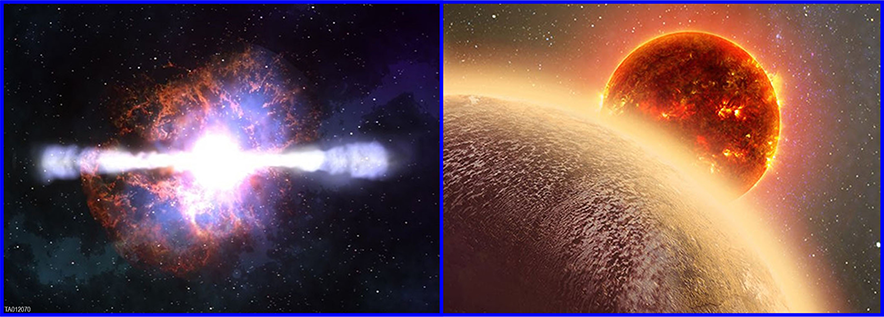Astrophysical research at SwRI is focused in three primary areas: death of massive stars, exoplanets, and astrophysical instrumentation. Current research topics of interest into the death of massive stars, specifically core-collapse supernovae (SNe) and gamma-ray bursts (GRBs) include: earliest X-ray and UV manifestation of SNe shock breakouts and neutron star mergers; numerical simulations of the transition between Type llb and lb SNe; UV behavior of Type lln SNe and its implications for the ejected shell; and utilization of SNe and GRBs as cosmological probes, particularly at high redshift. Exoplanet research at SwRI focuses on tying observational, experimental, and computational work to understand the formation, composition, diversity, and potential habitability of primarily rocky exoplanets. Current research topics include: the elemental abundances of FGKM0type stars and their planets; the effects of galactic chemical evolution on exoplanet composition; the internal structure, mineralogy and geodynamic state of rocky exoplanets; and quantifying the chemical and temporal parameter space where these exoplanets can be Earth-like and habitable. Our work includes contribution from astrophysics, geoscience, and planetary science with a special focus on bridging the interdisciplinary boundaries between the fields.
Members of the Astrophysics group lead a number of photonic hardware projects: SCORPIO is an eight-channel visible-to-infrared spectrograph and imager for Gemini Telescopes; constellation of compact space-based multi-band near-infrared (NIR0 imagers; far-UV (FUV) spectrographs; FUV telescope with imager and spectrograph; a novel simultaneous for a SmallSat; and a balloon-based mid-IR spectrograph for exoplanet studies. Wavebands of interest span from the NIR to the X-ray, with a core competency in the UV.
Faculty in Research Area


